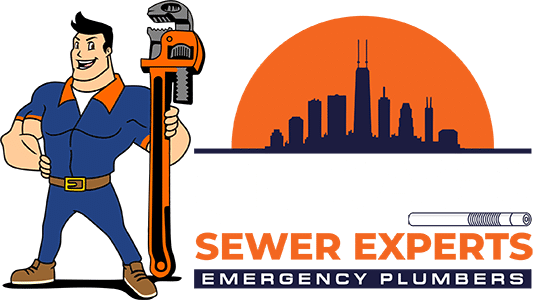As your trusted provider of residential and commercial plumbing and drain cleaning services in the Greater Chicago area, we prioritize delivering comprehensive solutions that address every aspect of maintaining a safe and efficient plumbing system. One vital component of any plumbing system is the backflow prevention device—a piece of equipment often overlooked but essential for protecting the quality and integrity of your home’s water supply.
Backflow—the undesirable reversal of water flow into the drinking water distribution system—can occur due to pressure changes in the water supply, potentially contaminating your home’s potable water with dangerous pollutants and pathogens. A properly functioning backflow prevention device safeguards your family’s health by ensuring that your drinking water remains free from unsafe contaminants.
Stay informed about the significance of backflow prevention and learn how to protect your home’s water supply, health, and plumbing system in the Greater Chicago area.
1. Causes and Dangers of Backflow
Backflow occurs when contaminated water reverses its flow and enters the potable water supply system—a situation that can have significant health and safety repercussions. Two primary factors can cause backflow in your home’s plumbing:
- Back Pressure: This occurs when the pressure in your plumbing system is higher than the supply pressure. It can be due to higher elevation within the system, the presence of pumps or boilers, or fluctuations in water demand. When back pressure exists, water may be forced back into the potable water supply system, introducing contaminants.
- Back Siphonage: Back siphonage arises when a reduction in the water supply pressure creates a negative or sub-atmospheric pressure within the potable water system. This pressure drop can result from high water usage within the area or nearby firefighting activities. In these situations, water can be drawn back into the clean water system from potentially contaminated sources.
Both back pressure and back siphonage can introduce hazardous substances from sources such as irrigation systems, sewage, and other contaminated water into your home’s drinking water. This can expose your household to a range of health risks, including waterborne illnesses and chemical contamination.
2. Types of Backflow Prevention Devices
To protect your home’s water supply from backflow, you can install backflow prevention devices designed to mitigate the risk of contamination. There are several types to choose from, depending on your specific needs and plumbing system:
- Air Gaps: An air gap is a physical separation between the end of a water supply line and the receiving vessel. It offers a reliable barrier against backflow, effectively preventing any potential contamination of the drinking water system. Air gaps are commonly applied in residential plumbing fixtures, such as faucets and toilet tanks.
- Atmospheric Vacuum Breakers (AVBs): AVBs are simple mechanical devices that use atmospheric pressure to prevent backflow. They are commonly used for irrigation systems and lawn sprinklers, where backflow risks primarily arise from back siphonage.
- Double Check Valve Assemblies (DCVAs): These are assemblies with two spring-loaded check valves and shutoff valves installed at both ends. DCVAs provide a high degree of protection against both back pressure and back siphonage, making them an excellent choice for residential and commercial installations with moderate hazard potential.
- Reduced Pressure Zone Assemblies (RPZs): RPZs are suitable for situations with a high degree of hazard risk, such as chemical processing facilities or locations with hazardous contaminants nearby. They offer a high level of protection against backflow by utilizing a combination of check valves and a pressure relief valve, which releases water in the event of a pressure drop.
3. Routine Backflow Prevention Device Testing and Maintenance
Routine testing and maintenance of your backflow prevention device are crucial for ensuring its ongoing effectiveness and safeguarding your household’s health. Professional backflow testing includes the following steps:
- Visual Inspection: A thorough examination of the backflow prevention device helps identify signs of wear, corrosion, or damage that may impact its functionality.
- Pressure Testing: This procedure entails measuring the pressure differential across the device’s check valves and evaluating the system’s ability to withstand potential backflow issues.
- Functional Testing: Testing each component of the backflow prevention device ensures that all elements are functioning correctly and preventing water contamination.
In addition to regular testing, maintaining your backflow prevention device may include replacing worn parts, cleaning internal components, and performing any necessary adjustments or repairs. By prioritizing routine maintenance, you can ensure the ongoing safety and efficiency of your backflow prevention device.
4. Enlisting the Support of a Qualified Plumbing Professional
To safeguard your home’s water supply and maintain a robust backflow prevention system, it’s essential to work with a qualified plumbing professional. A skilled technician can help you choose the appropriate device for your needs, install it correctly, and ensure that it is well-maintained through regular testing and servicing.
Conclusion
Backflow prevention is a crucial aspect of maintaining a secure and healthy water supply in your Chicago home. By understanding the causes, risks, and available protective devices, you can safeguard your household from potential water contamination. Routine testing and maintenance ensure that your backflow prevention system continues to function effectively, protecting your family’s health and well-being.
For comprehensive residential plumbing services related to your Chicago home’s water supply system, including backflow prevention device installation, testing, or maintenance, contact Chicago Sewer Experts today. Our team of expert technicians is dedicated to ensuring the safety and efficiency of your plumbing system, including sewer repair in Chicago.

Recent Comments